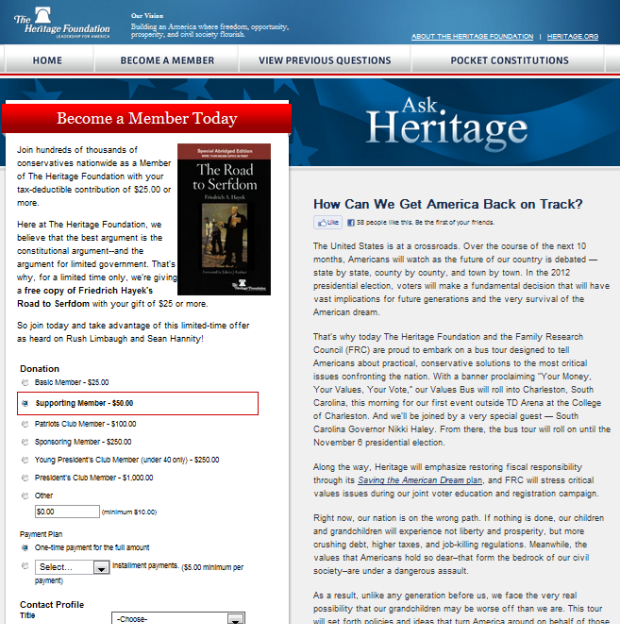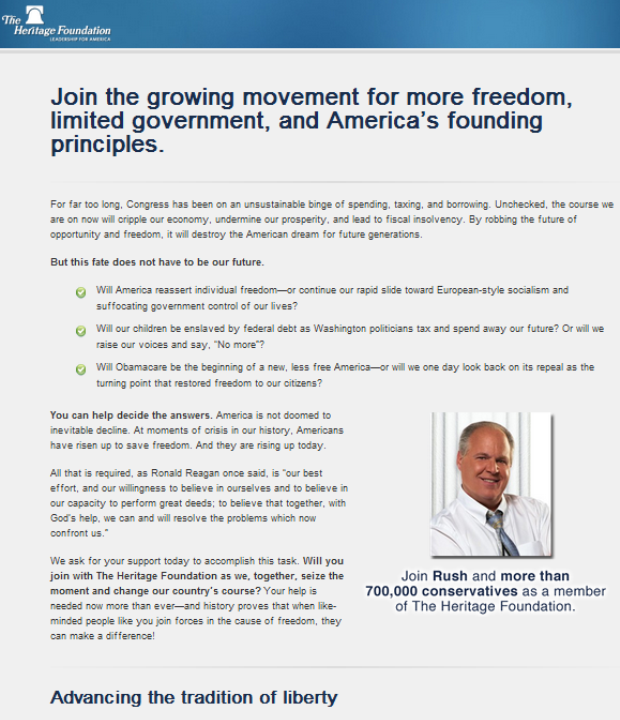Short copy isn’t the only route to raising money online
Over at Future Fundraising Now, Jeff Brooks argues that online fundraisers shouldn’t scare off donors with long copy:
On the web, keep your copy short, simple, repetitive and easy to read (short paragraphs, short sentences, small words). Zoom ahead to the action you want readers to take. Skip the philosophical foundations — you can get to that later if you manage to stir them to action now.
Last fall, we decided to test this for ourselves at Heritage.
Our control page featured a donation form above the fold with 85 words of introductory copy:

Our treatment, with a revised design, included fully 886 words above the form to explain the value of a membership donation to the page’s visitors, who are almost universally prospective donors:

The results? The treatment, with almost two printed pages worth of copy, increased revenues by 274%. It wasn’t even close.
Brooks is half right, especially the points about simplicity and readability. A detailed history of your organization, for instance, may be out of place on a donation form, though a list of major accomplishments is certainly in order. Long blocks of text may discourage people from continuing the process, so these should be broken up with bullets, headers and graphics. Your copy should in all cases be readable, scannable, and jargon-free.
Brooks falls short, however, in prescribing a particular length of copy. Forcing your copy into short form for the sake of shortness can be counterproductive. Short copy poses a challenge in that it limits your opportunity to explain your value proposition. The real challenge is getting the right copy rather than copy of any particular length.
When writing donation page copy, keep in mind your audiences and their motivations. One of your current supporters may not need much encouragement to open his wallet again, though you certainly can’t take his giving for granted. A prospective donor may need more selling than a current donor, so you should explain what it is you do and why his donation will make a difference. Donors on mobile devices may have different needs altogether.
Most importantly, remember that you, the fundraiser, are not the target audience. Remember also that your intuition may not be correct. Test to find out what works, and particularly challenge the conventional wisdom. Direct mail fundraisers used this technique to discover, to their continued surprise, that long letters perform better than short, to-the-point letters. But this is not true in all cases.
Have you found that copy of a particular length works better online? In what context?